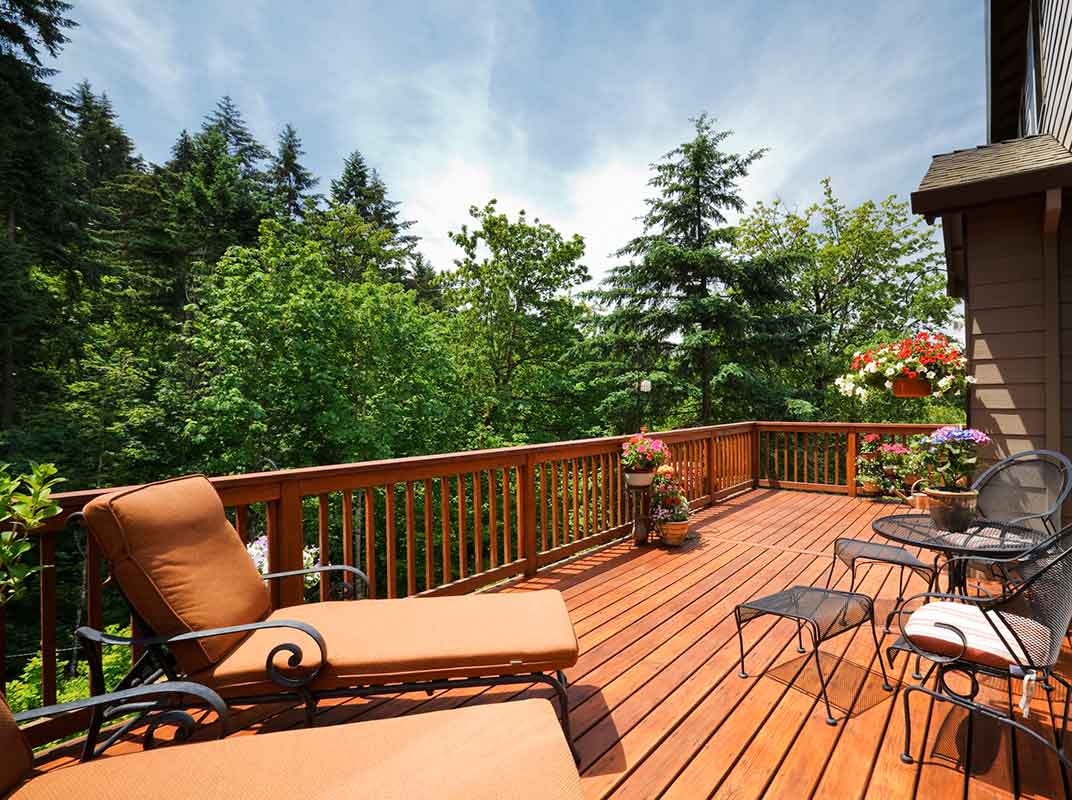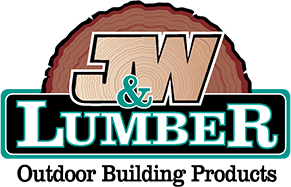
Selecting the right decking boards can be a difficult choice. A deck is a prominent structure that defines so much of your outdoor space, so you want to be sure to make a decision that matches your budget, meets your aesthetic, and will stand the test of time. It’s important to remember that different decking boards deliver different looks and functionality. Here’s a breakdown of the basics before you make your final decision.
Read More: 7 Things You Need to Know Before Building a Deck.
Bamboo
Bamboo is a modern, sophisticated choice for your decking boards – with the added benefit of being a quickly renewable resource. If the notion of bamboo conjures up images of tiki bars and Fijian huts, think again. Bamboo decking boards are created through a unique process which involves stacking glued-together layers of bamboo then treating them with a high-force press to compress them into crisp, uniform planks.
Unlike wood, bamboo has few striations, so it absorbs stain uniformly throughout. As a result, bamboo decking boards are available in a variety of colors. Functionally similar to a hardwood plank, bamboo is known for its density, durability and toughness. Because it’s not completely natural (due to the adhesives in the plank-creation process) bamboo can also be installed very close to the ground without worry about warping or moisture-related decay that affects wood, making it an exceptionally versatile option for outdoor applications.
Hardwoods: Mangaris and Ipe
Hardwoods also deliver a sophisticated look for all decks and their durability make them a fantastic choice for outdoor use. They may be less economical than other outdoor lumber choices, but their beauty and richness definitely make a statement that pays off. Because of their density, hardwoods don’t absorb stain as readily as some of the other wood species. However, this usually isn’t a problem because Mangaris and Ipe – two of the most popular hardwoods for outdoors – look great with a simple clear varnish.
Mangaris’ light hue ages handsomely while Mangaris Red (Red Balau) features a natural auburn color that is reminiscent of mahogany. South American Ipe (also known in those regions as Amapa, Cortex, Guayacan, Flor Amarillo, Madera Negra and LaPache Negra) is another smart decking choice that creates a luxurious outdoor space while standing up to the elements. Naturally light in color with a teak-like appearance, as Ipe ages naturally, over time it will mature into a rich gray-silver.
Softwoods: Redwood and Cedar
Redwood and cedar are some of the most common lumber we see in decking, because they are durable and easy to work with. Both of these woods are classified into various grades, reflected in their price point and quality. Redwood is classified into three different grades while cedar is divided into two. The lowest grade is always the least expensive. Those planks will feature more knots, natural variation and a less consistent grain pattern. The lower grades of softwood are great options for rustic-looking decks.
Toward the upper end of both cedar and redwood, planks are cut in such a way that the vertical grain is going in the same direction, making it less noticeable. In higher grades of both redwood and cedar, the price point can exceed almost any other wood – but the resulting decking wood will be clear, uniform and eye-catching.
One thing to keep in mind: softwoods are graded on one face and one edge. Therefore, if you find imperfections in top-graded softwood lumber, simply flip the plank over and you’ll find a more perfect face.
Read More: The 7 Most Common Decking Mistakes Homeowners Make.
Composites
Unlike the natural products listed above, composites are not wood. They are synthetic materials that have been carefully engineered to look like wood, but without the expensive, time-consuming upkeep. Composite is a fantastic option for anyone who wants to take a “set it and forget it” approach to their deck.
Composites have many useful advantages over wood, including resistance to fading, warping and water damage (backed up by a warranty), color and “grain” uniformity across all planks, and ultra-precise plank size and shape that makes it easy to connect boards. Composites are just as durable as wood and in many cases, may last even longer. Finally, many are designed with the end-user’s perspective in mind to work well with specific railing or lighting systems.
Though careful engineering can mean that some composites sell for a higher price point than natural wood, there are lot of options to match every budget. Unlike wood, composites don’t need to be stained — they are manufactured in a variety of colors to match every design scheme.
Right now is a great time to upgrade your deck. With so many different types of decking boards on the market, you have more flexibility than ever to choose (natural or synthetic) lumber with a look and performance that matches your taste and budget.
